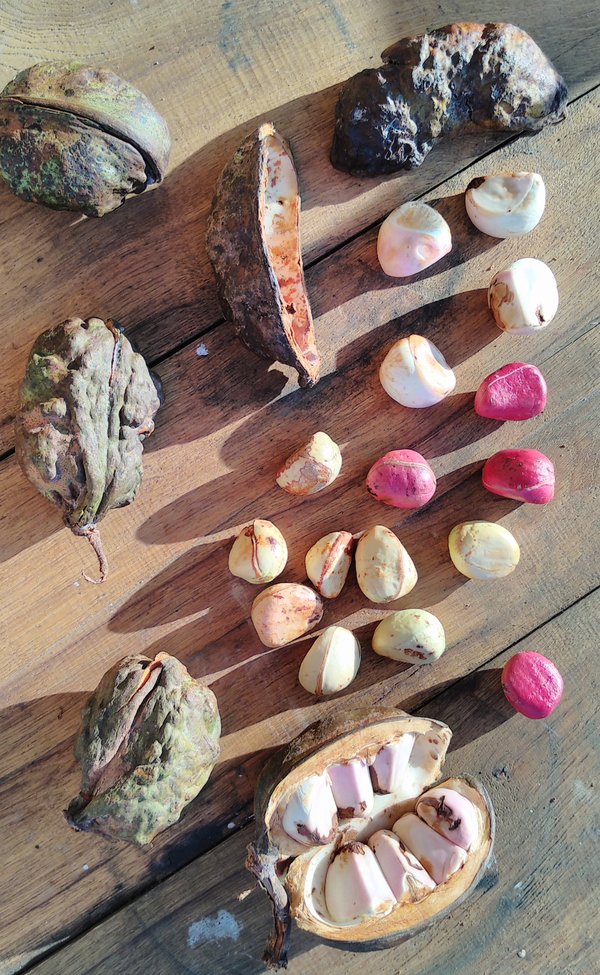"Kola nut" is the term for the seed from the fruit of the kola tree. It grows to the size of a chestnut tree and the peeled fruits are as firm to bite into as a fresh chestnut. It comes in a wide range of colors, from wine red to pink to cream white. Its taste is slightly bitter, but fresh and it dispels fatigue and has an invigorating effect because it contains caffeine. For this effect, kola nuts have been chewed and traded in West Africa, for example in Ghana, Nigeria, or Ivory Coast, for many hundreds of years and are part of various traditions and customs. Today, it is cultivated in many parts of Africa and also occurs in Asian countries like India or on the American continent, for example in Brazil. It is probably best known for its role in the original recipe of Coca-Cola. Even though it is no longer found there today, some soft drink manufacturers still use it for its taste and caffeine.
On this page, we want to gather all knowledge about and around the kola nut. The beginning has been made, but we are always open to further information, literature or even travel stories:
Profile
Name & Origin:
Kola nut, Cola nut, Kola, Cola, Bissi, oji, Guru, toglau, makasso
Scientific Name(s): Cola nitida (and related species such as Cola acuminata)
Origin: The tropical rainforests of West Africa
Distribution: Today cultivated in many tropical regions of Africa, Asia, and South America.
Kola Tree:
Growth: The kola tree is an evergreen tree that can grow up to 25 meters tall.
Leaves: Dark green, leathery, shiny, and elongated oval in shape. Between 10 cm and 40 cm long.
Flowers: Small, yellow or white flowers with red stripes that grow in clusters.
Fruit: Star-shaped, five-part fruit capsules, each containing 5–12 kola nuts.
Kola Nut:
The term "nut" is botanically incorrect, more accurately it is the seed of a aggregate fruit, similar to cocoa. Appearance: The seeds are about the size of chestnuts, have a white, pink, or red color, and a characteristic, slightly bitter kola taste. Ingredients: They contain caffeine (2–3%) and theobromine (also found in cocoa), both of which have a stimulating and invigorating effect.
Usage:
The kola tree is often planted together with cocoa because it provides shade for the cocoa.
Traditionally, the kola nut is used in various ways in West Africa. Its stimulating effect is well known, and it is also valued as a medicine. Moreover, it plays an important role in many traditional customs, for example as a guest gift, at weddings, and in religious rituals.
It used to be an important ingredient in sodas. Today, the taste and caffeine are usually produced synthetically, but some manufacturers still use kola in their drinks.

 DE
DE  EN
EN 